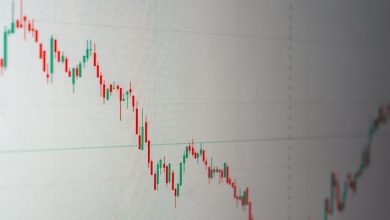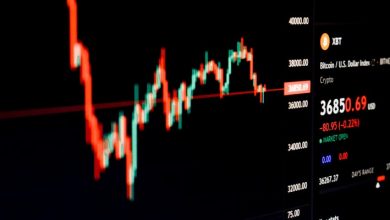The Role of Technical Indicators in Trading Decisions

- Understanding Technical Indicators and Their Importance in Trading
- Popular Technical Indicators Used by Traders
- How to Use Technical Indicators to Make Informed Trading Decisions
- The Impact of Technical Indicators on Market Analysis
- Combining Technical Indicators for Enhanced Trading Strategies
- Common Mistakes to Avoid When Using Technical Indicators in Trading
Understanding Technical Indicators and Their Importance in Trading
Technical indicators are essential tools used by traders to analyze the price movements of financial assets. These indicators are mathematical calculations based on historical price, volume, or open interest data. Traders use technical indicators to identify trends, confirm market conditions, and predict potential price movements. Understanding technical indicators is crucial for making informed trading decisions.
There are various types of technical indicators, each serving a specific purpose in analyzing market behavior. Some common technical indicators include moving averages, relative strength index (RSI), stochastic oscillators, and Bollinger Bands. These indicators help traders identify overbought or oversold conditions, trend reversals, and price momentum.
Technical indicators play a vital role in trading decisions as they provide valuable insights into market trends and potential price movements. By analyzing technical indicators, traders can make more informed decisions about when to enter or exit trades, set stop-loss levels, and take profit targets. Technical indicators can help traders minimize risks and maximize profits in the volatile financial markets.
In conclusion, understanding technical indicators and their importance in trading is essential for traders looking to succeed in the financial markets. By using technical indicators effectively, traders can gain a competitive edge and make more profitable trading decisions. It is crucial for traders to continuously educate themselves on different technical indicators and how to interpret them accurately to enhance their trading strategies.
Popular Technical Indicators Used by Traders
Technical indicators are essential tools used by traders to analyze market trends and make informed trading decisions. These indicators help traders identify potential entry and exit points, as well as determine the strength and direction of a trend. There are several popular technical indicators that traders commonly use to guide their trading strategies:
- Moving Averages: Moving averages are trend-following indicators that smooth out price data to identify the direction of a trend. Traders often use simple moving averages (SMA) or exponential moving averages (EMA) to determine the overall trend in the market.
- Relative Strength Index (RSI): The RSI is a momentum oscillator that measures the speed and change of price movements. Traders use the RSI to identify overbought or oversold conditions in the market, which can signal a potential reversal in price.
- Bollinger Bands: Bollinger Bands consist of a simple moving average and two standard deviations plotted above and below the moving average. Traders use Bollinger Bands to identify volatility in the market and potential price reversals.
- MACD (Moving Average Convergence Divergence): The MACD is a trend-following momentum indicator that shows the relationship between two moving averages of a security’s price. Traders use the MACD to identify changes in the strength, direction, momentum, and duration of a trend.
- Stochastic Oscillator: The Stochastic Oscillator is a momentum indicator that compares a security’s closing price to its price range over a specific period. Traders use the Stochastic Oscillator to identify overbought or oversold conditions and potential trend reversals.
By incorporating these popular technical indicators into their trading strategies, traders can gain valuable insights into market trends and make more informed decisions. It is essential to understand how each indicator works and how to interpret their signals effectively to maximize their potential benefits in trading.
How to Use Technical Indicators to Make Informed Trading Decisions
One way to make more informed trading decisions is by utilizing technical indicators. Technical indicators are tools that help traders analyze past price movements and predict future trends in the market. By understanding how to interpret these indicators, traders can gain valuable insights into potential price movements and make better trading decisions.
There are many different types of technical indicators available, each with its own unique set of calculations and interpretations. Some popular technical indicators include moving averages, stochastic oscillators, and relative strength index (RSI). These indicators can help traders identify trends, momentum, and overbought or oversold conditions in the market.
To use technical indicators effectively, traders should first familiarize themselves with the specific indicator they are using and understand how it is calculated. They should also consider combining multiple indicators to get a more comprehensive view of the market. Additionally, traders should be cautious not to rely too heavily on indicators alone, as they are not foolproof and should be used in conjunction with other forms of analysis.
When using technical indicators, it is important for traders to remain objective and not let their emotions dictate their trading decisions. By sticking to their trading plan and using technical indicators as a tool to guide their decisions, traders can increase their chances of success in the market. Overall, technical indicators can be a valuable resource for traders looking to make more informed and strategic trading decisions.
The Impact of Technical Indicators on Market Analysis
Technical indicators play a crucial role in market analysis, providing traders with valuable insights into price trends and potential trading opportunities. These indicators are mathematical calculations based on historical price, volume, or open interest data. By analyzing these indicators, traders can make more informed decisions about when to buy or sell assets.
One of the key benefits of technical indicators is their ability to help traders identify trends in the market. By using indicators like moving averages, Relative Strength Index (RSI), or Bollinger Bands, traders can spot patterns in price movements that may indicate a potential trend reversal or continuation. This information can help traders determine the best entry and exit points for their trades.
Additionally, technical indicators can also be used to confirm the strength of a trend. For example, if the price of an asset is increasing, but the volume indicator is showing a decrease in trading volume, this may indicate that the trend is losing momentum and could soon reverse. By using multiple indicators in conjunction with each other, traders can get a more comprehensive view of the market and make more accurate predictions.
Overall, technical indicators are valuable tools for traders looking to make informed decisions in the market. By understanding how to interpret these indicators and using them effectively in their trading strategies, traders can improve their overall profitability and success in the market.
Combining Technical Indicators for Enhanced Trading Strategies
Combining various technical indicators can significantly enhance trading strategies by providing a more comprehensive view of market conditions. By utilizing multiple indicators, traders can reduce the risk of false signals and increase the accuracy of their trading decisions.
One approach to combining technical indicators is to use a mix of trend-following and momentum indicators. Trend-following indicators, such as moving averages, can help identify the overall direction of a market, while momentum indicators, like the Relative Strength Index (RSI), can indicate the strength of a trend. By using both types of indicators together, traders can confirm trends and potential entry points.
Another effective strategy is to combine leading and lagging indicators. Leading indicators, such as the Stochastic Oscillator, can signal potential changes in price direction before they happen. Lagging indicators, like the Moving Average Convergence Divergence (MACD), can confirm trends that have already begun. By using a mix of leading and lagging indicators, traders can anticipate market movements and confirm trends.
It is important to note that while combining technical indicators can enhance trading strategies, it is essential to avoid overcomplicating the analysis. Traders should carefully select a few key indicators that complement each other and use them consistently to make informed trading decisions. Additionally, traders should always consider other factors, such as market news and economic indicators, when making trading decisions.
Common Mistakes to Avoid When Using Technical Indicators in Trading
When utilizing technical indicators in trading decisions, it is crucial to be aware of common mistakes that traders often make. Avoiding these pitfalls can help improve the accuracy and effectiveness of your trading strategy.
- One common mistake to avoid is relying too heavily on a single technical indicator. It is essential to use a combination of indicators to get a more comprehensive view of the market.
- Another mistake is failing to consider the timeframe of the indicators being used. Different indicators may be more effective on different timeframes, so it is important to match the indicator to the timeframe of your trade.
- Ignoring the overall market conditions is also a mistake that can lead to poor trading decisions. Technical indicators should be used in conjunction with an analysis of the broader market environment.
- Traders often make the mistake of not backtesting their strategies with technical indicators. It is essential to test your strategy over historical data to see how it would have performed in the past.
- Lastly, a common mistake is becoming too emotionally attached to a specific indicator. It is important to remain objective and be willing to adapt your strategy if the indicators suggest a change is necessary.
By being mindful of these common mistakes and taking steps to avoid them, you can enhance the effectiveness of technical indicators in your trading decisions. Remember to use a diverse set of indicators, consider the timeframe, analyze market conditions, backtest your strategy, and stay objective in your decision-making process.



